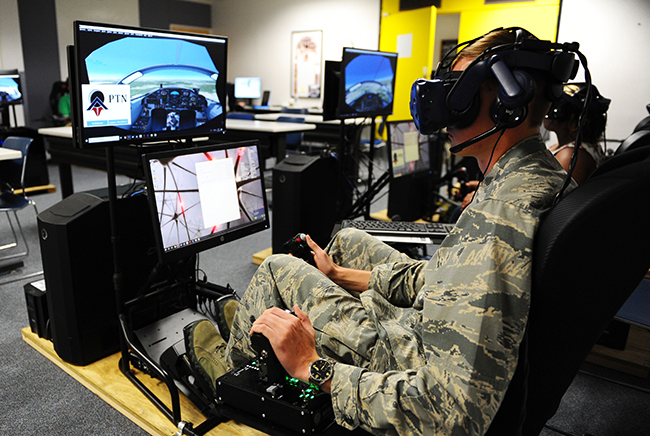
Cade Cavanagh, a cadet first class at the US Air Force Academy, uses the high-tech Pilot Training Next program at the Academy to learn basic aviation skills. This summer, the Academy and Air Education and Training Command are hosting training sessions to explore the benefits of exposing students to aviation skills using virtual reality technology. Air Force photo by Jennifer Spradlin.
The Air Force’s third iteration of its Pilot Training Next initiative will focus on preparing pilots for multi-domain operations against advanced militaries, Air Education and Training Command said in an Aug. 29 release.
PTN began in February 2018 to modernize training and speed up the process with technologies like virtual-reality headsets and gaming and new learning theories.
Its third phase, which begins in January, will use a T-6B+ aircraft variant to test the service’s ability to teach combat and mobility flight skills to Formal Training Unit-ready pilots using “moving map display, synthetic radar, air-to-air and air-to-ground symbology, as well as detailed downloadable debrief files,” AETC said.
The program’s use of VR alongside traditional assets supplements academics and replaces up to 80 T-6 flying hours. Pilots encouraged to use their systems outside of class as much as possible, according to AETC officials.
PTN recently graduated its second class of 14 pilots from the US Air Force and Navy as well as the Royal Air Force. Graduates will go on to fly a range of fighter, bomber, airlift, intelligence, special-operations, and training aircraft. The Navy pilot was chosen to fly the T-45A Goshawk, and the RAF graduate will fly the Eurofighter Typhoon, according to the release.